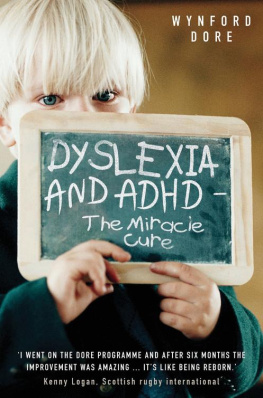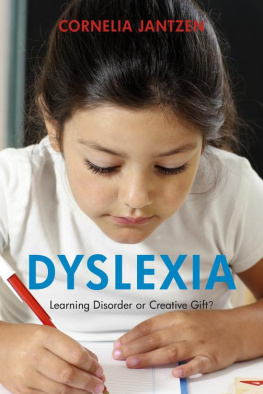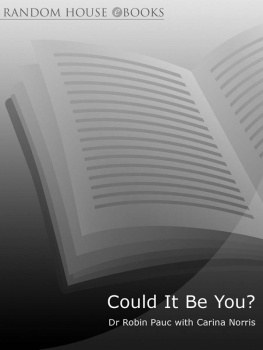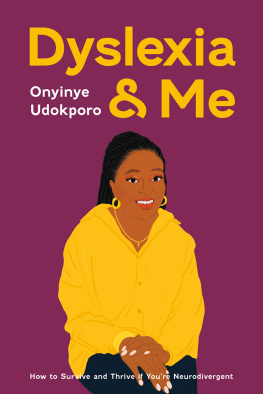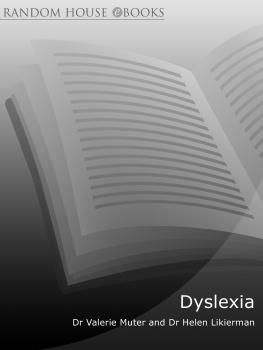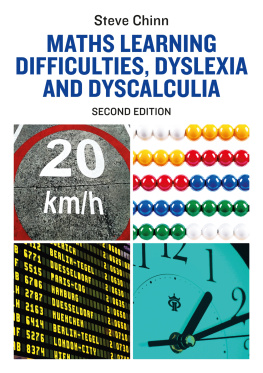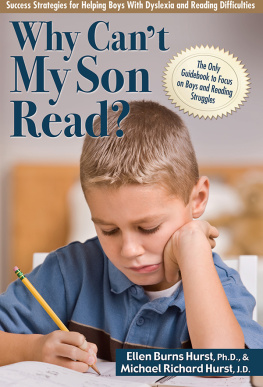I am just one piece of a smallish organisation tackling a huge problem worthy of a really large institute. It should have been Harvard Medical School, Oxford University or some highly resourced organisation pursuing this. Research from these wonderful establishments has been vital of course but piecing it all together has only happened because of the passionate commitment and contribution of each and every one of a number of folk working with me in the team, and these I have to thank. There is not space to include everyone but I will mention some.
First, Susie she had the desperate need, she had obvious hidden abilities and thus provided the inspiration. To Mum for instilling in me that life is good when you are helping others who need it. My partner Julie, who kept me sane and alive. Roy Rutherford for piecing the medical research together (and being the only doctor mad enough to listen); Evelyn the best secretary in the world; Professors Nicolson and Reynolds; Professors Schmahmann and Price. Dr Ned Hallowell, Trevor Davies, Bob Brolly, Carolyn, Rachel, Ian, Joe, Tim, John, Susan, Susanne, Polly, Pam, Rosie, Peter Morley, Kenny, Toyah, Julie, John McDermott and every other member of our team and all the families that gave it a go so we could conduct our research. I count myself very lucky to have Phil Hall as a friend and adviser, to have David Brookes who made the task of putting this together so much easier and a wonderful publisher who realised the need to share this breakthrough with everyone. What a crew!
F ar too many people are still needlessly struggling with reading, struggling with attention issues, struggling with co-ordination and, if all that wasnt bad enough, often struggling with poor short-term memory as well. Research is showing that 80% of those with reading difficulties also have attention difficulties and, in an attempt to address this, we have changed the title for this paperback edition to include reference to ADHD. Research suggests that the root cause of all of these symptoms lies in one part of the cerebellar, and that by developing that one area, many (if not all), of those symptoms improve significantly. This is why it is so important to address the source of these symptoms.
The approach described in this book is not a one size fits all approach; its an individualised approach that focuses on bringing out all of the hidden potential of that individual. One surprising aspect of the results we see is that, often, a large number of further skills are improved over the course of the programme. This is in contrast to the many interventions that tackle these problems from the symptom end there are usually too many symptoms to be able to deal with them all individually, hence tackling the root cause is a far better idea altogether.
It was expected that the hardback edition of this book would be controversial, and it was. Thousands seemed to appreciate an explanation at last and then there were a few who didnt like it so much. Most of this latter group fitted into two categories; they were either specialists in phonics or they are engaged in research funded directly or indirectly by drug companies. So the arguments continue to abound Does dyslexia exist?, Can it be cured? or Is ADHD just an excuse? If we just asked teachers and parents these same questions we could get some very clear answers. By then asking them What works? we would get some more enlightening answers.
This paperback edition is being prepared at a time when yet another research study on reading has just been published. This latest study says that the British Government has spent half a billion pounds in the last few years on literacy interventions with no real impact on reading ability. What a disappointment (but maybe no surprise) to those who are suffering, all their families and all those teachers who put their heart, mind and soul into taking the latest advice from education advisors about how to teach those with dyslexic type symptoms. This book shows that these failures are not the fault of teachers or parents. An international benchmarking standard is desperately needed for all educational interventions. Only when that has happened will we be able to determine the best and most effective tools to use in our classrooms.
A recent and important development for all educational professionals and parents is the availability of an on-line assessment (ACE) that is neurologically based, fun for kids to do and provides teachers and parents with vital data about the underlying potential that a child may have. How amazing will a teacher find it to run a simple computer-based assessment on all pupils in the class to get an understanding of their learning style, to ascertain who has hidden potential and who in the class is working exceptionally hard to achieve their results? When it is used more generally it will make us focus on the enormous talent that so many children have despite their being constrained by the physiological reasons that makes reading or concentrating for long periods difficult.
And there is more hope a US-based charity is funding a very large independent study on the effect of the theories behind the Dore Programme. It is hoped that it will not only provide crucial data on the various symptoms being addressed but may also provide a blueprint for benchmarking that can be applied to all interventions used for these symptoms.
A Miracle Cure? was the title of a major documentary programme produced in the UK and shown on ITVs Tonight with Trevor McDonald. The programme took an unprecedented, detailed look at the work Dore Achievement Centre had done in tackling learning difficulties. It triggered record-breaking interest in two different and surprising ways.
First, there were hundreds of thousands of attempts to phone our offices, made by people whose lives were being blighted by the symptoms they had witnessed during the documentary. These included poor reading skills, poor writing ability, poor concentration and often a low self-esteem. Some had even been called stupid or lazy, which is particularly cruel as we have now discovered that usually these folk are potentially brighter and are working harder than others. They had watched the show and marvelled as people with these problems had been transformed, and they wanted to find out how they could have this groundbreaking treatment themselves.
Most of them had not had those symptoms diagnosed, although some had been labelled as suffering from ADHD (Attention Deficit Hyperactivity Disorder), dyslexia, dyspraxia or, in a few cases, Aspergers Syndrome. As a consequence of that television programme, many of those people have now had their lives totally transformed.
The second response to the documentary was from the learning difficulties industry offended by the documentary makers claims of a revolutionary breakthrough in the treatment of dyslexia and the possibility of a cure. When used, cure is a word that seems to cause great offence to many professionals and for this reason we have always chosen to avoid using it. But the fact is the drug-free exercise-based programme we have developed is now delivering amazing results, and research says that the results seem permanent the question is as to how best those results are described. Is cure the best word to use?
Families that have to live with the symptoms of learning difficulties every day would love to have a solution for them, but up until now they may not have been aware that one may exist. Why is that? Well, most of those with symptoms of learning difficulties are brighter than average behind that mask of symptoms that is. But, because the underlying cause of these problems has been misunderstood, virtually all treatments or programmes developed to deal with them up until now have had only mediocre impact. Thus, our life-changing programme presented quite a threat to that industry.

